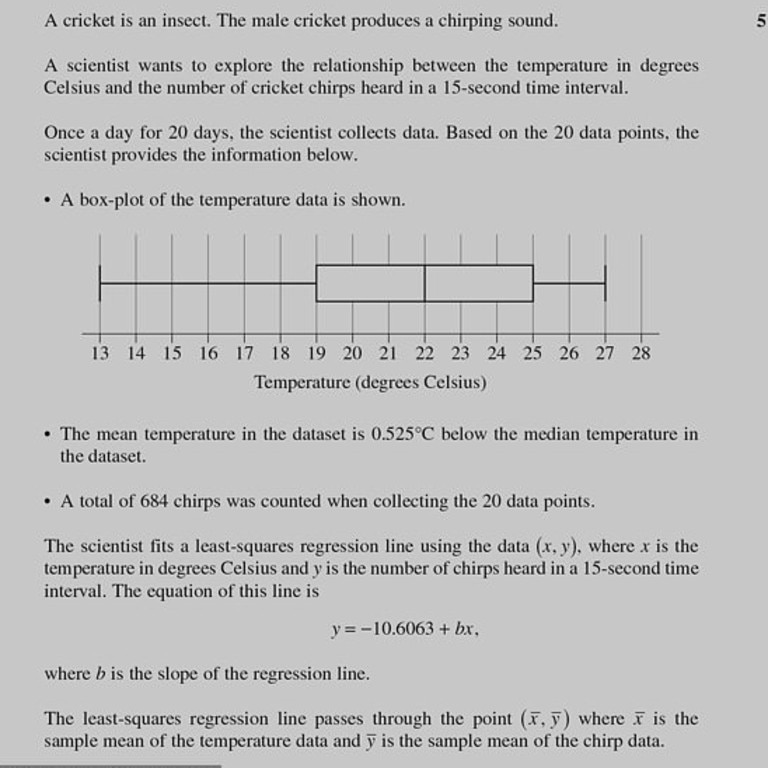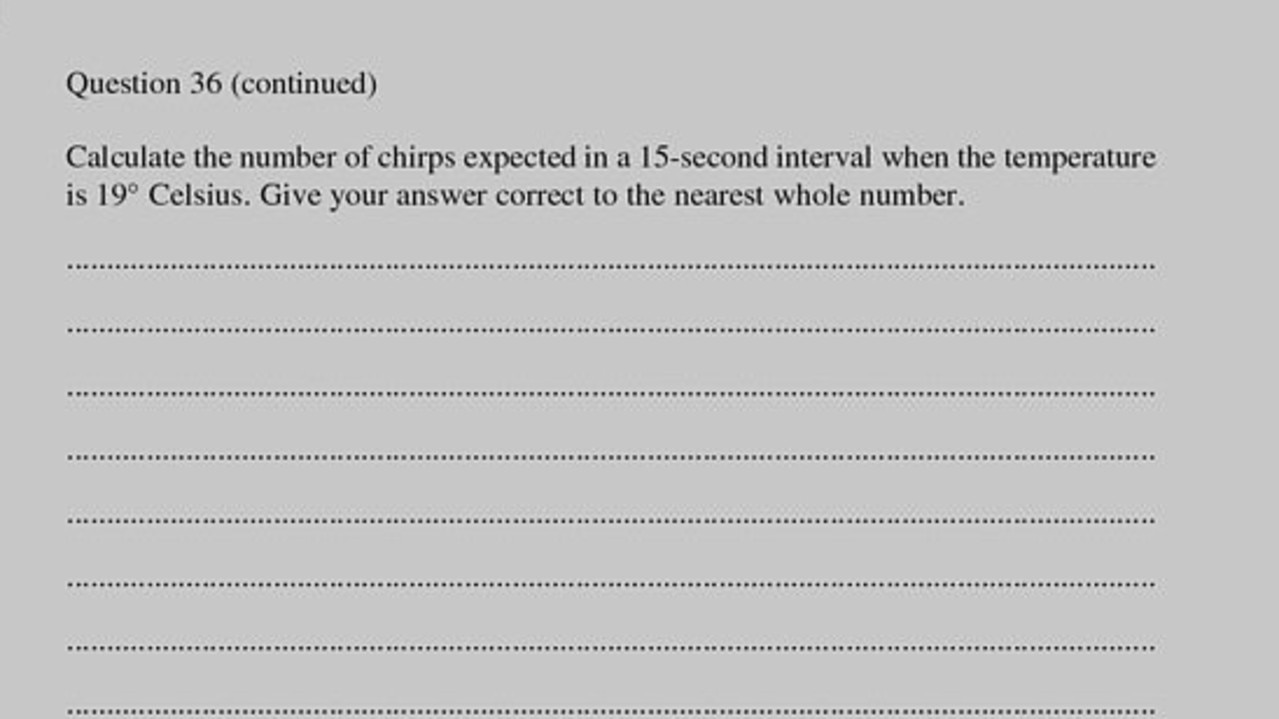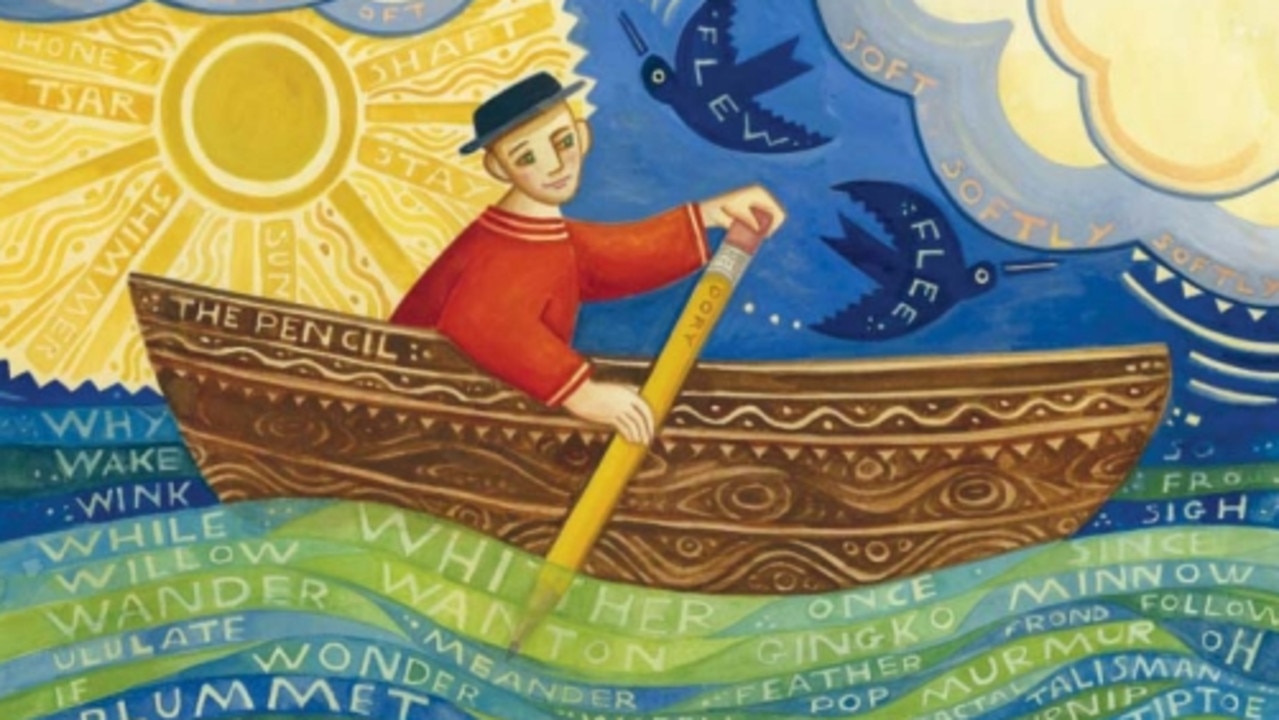Tricky maths question NSW HSC students struggled to solve
Scores of NSW students sat their HSC standard mathematics exam on Monday – but one curly question left many of them stumped.
HSC students were bamboozled by a series of tough questions included in Monday’s standard mathematics exam.
And one in particular has become the subject of intense backlash – and memes – after countless students struggled to answer it at all.
The issue arose after the syllabus was tweaked by the NSW Education Standards Authority (NESA), which sets HSC exam papers.
Under the changes, NESA included some of the same questions in both the standard and advanced maths courses.
However, while students and teachers were expecting a handful of questions to be duplicated across both papers, in the end there were 23.
And one – relating to chirping crickets – seemed to cause the most distress.
RELATED: Exam question leaves students stumped

The examination paper included a box plot of temperature data, and pupils were instructed to: “calculate the number of chirps expected in a 15-second interval when the temperature is 19° Celsius. Give your answer correct to the nearest whole number”.

The question left many students scratching their heads, with many pupils and parents later voicing their frustration on social media.
i never have to do another HSC maths exam ever again pic.twitter.com/DGgevmbfzv
— 🎃・゚: * 🎃 * : ・゚🎃 (@kaninbun) October 26, 2020
i think my moots who did their maths hsc today will enjoy this 🙂🙂 pic.twitter.com/Cm2iaDns9w
— ‧₊✜ᴮᴱsamâ·~semi-ia until exams finish (@_zer0w0clock_) October 26, 2020
@RealMarkLatham The HSC Maths exam papers are another NESA stuff-up. The way they are justifying it is ridiculous. At the very least, NESA should have told everyone what they might expect instead of dropping it in the exams.
— grozerown (@grozerown) October 26, 2020
anyways i tried to search this up and im going to cry why whatt does this meannd im breaking down why arre cricketsaksjfjf https://t.co/DoB1vREjJu pic.twitter.com/ZauKKHY14i
— Amelie ♡ (@screaminsapphic) October 26, 2020
A NESA spokeswoman told news.com.au it had received feedback from a number of students and parents about Monday’s Maths Standard 2 exam “being difficult”.
“NESA confirms that all questions asked within the Maths Standard 2 exam were within the scope of the syllabus,” the spokeswoman said.
“All HSC exam papers are designed to differentiate student achievement. NESA will monitor marking of the Maths Standard 2 paper very closely.
“Mathematics education is a priority for the NSW Government.”
The spokeswoman said the new HSC maths syllabuses, examined for the first time in 2019 for Maths Standard 1 and 2 and in 2020 for Maths Advanced, Extension 1 and Extension 2, encourage students to “choose the mathematics course appropriate for their ability”.
“The Maths Advanced and Maths Standard 2 papers now include some common questions which are based on shared syllabus content,” the spokeswoman said.
“This year 23 marks were common to the two papers.
“The inclusion of common questions enables NESA to better understand student maths abilities across the different maths courses.”
The controversy comes hot on the heels of similar outcry over this year’s English HSC exam, which was held earlier this month.
students sitting their exam for the year 12 HSC in NSW were presented with an open-ended question that left them confused.

Students were shown the above picture by US artist Julie Paschkis, who wants children to “savour language and to play with word”.
But many were flummoxed when the were then asked to explain how the image used a variety of language forms and features to communicate ideas about being creative.
“The words were so odd — some of them I had no idea what they even meant, some more simple words like sun and honey were very, very random but some of them I had never even seen before,” Bradfield Senior College Year 12 student told The Daily Telegraph.
“In class we learnt about how to dissect images … It was confusing being given a picture — do we talk about the features visually like colour, or do we solely talk about words because that was what was in the question?”
Do you think the question was too hard? Tell us your thoughts in the comments below




